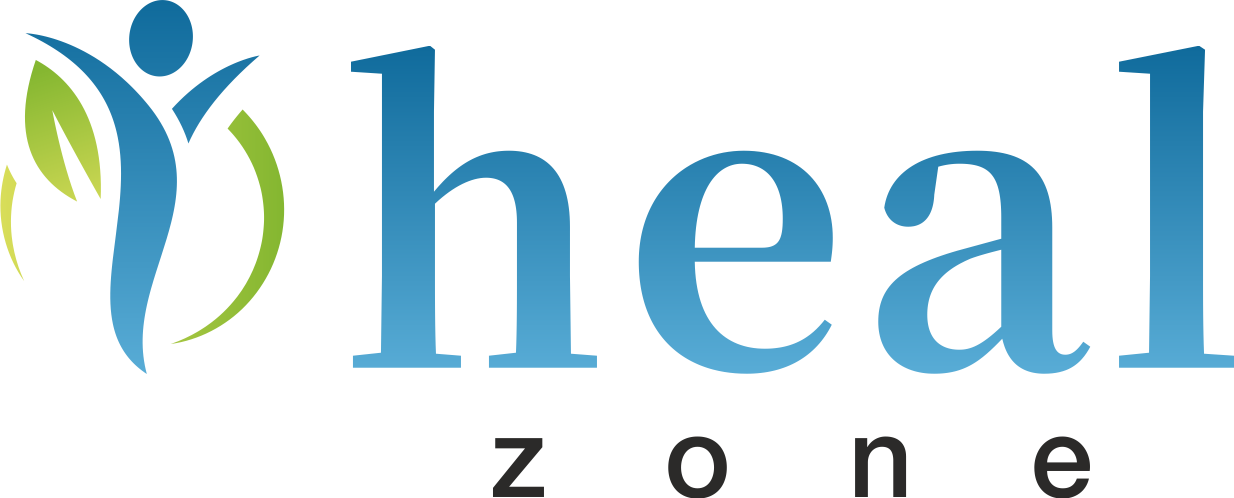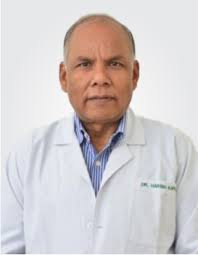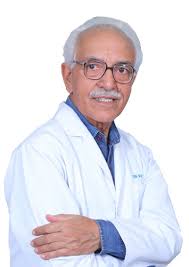What Is Adolescent Idiopathic Scoliosis (AIS)?
Adolescent Idiopathic Scoliosis is a condition where the spine curves sideways in a C- or S-shape during the growth spurt of adolescence—usually between ages 10 and 18. The term “idiopathic” means the exact cause is unknown, and the condition tends to occur more often in girls.
Key Characteristics of AIS:
- Curvature typically measured in degrees (Cobb angle)
- Curves greater than 10 degrees are considered scoliosis
- May progress rapidly during puberty
- Often painless but can impact posture, breathing, and appearance
Early detection and treatment are crucial to prevent long-term spinal deformity and complications. India’s orthopedic centers specialize in both non-surgical and surgical management of AIS.
What Are the Types and Classifications of Scoliosis in Adolescents?
AIS is classified based on curve severity, spinal region affected, and the pattern of the curve.
Based on Curve Location:
- Thoracic scoliosis – affects the mid-back
- Lumbar scoliosis – affects the lower back
- Thoracolumbar scoliosis – spans both regions
Based on Curve Direction:
- Right convex – curve goes to the right side
- Left convex – curve goes to the left side
Based on Curve Severity:
- Mild – 10° to 25°
- Moderate – 25° to 45°
- Severe – More than 45°
India’s spine specialists use X-rays and 3D imaging to classify the scoliosis accurately, which helps in planning the appropriate course of treatment, whether bracing or surgery.
Who Needs AIS Treatment and When Is Surgery Required?
Treatment is recommended based on the degree of spinal curvature, skeletal maturity, and rate of progression.
Candidates for Non-Surgical Treatment:
- Curves under 25 degrees
- Still growing (skeletally immature)
- Regular observation every 6 months
Candidates for Bracing:
- Curves between 25–45 degrees
- Rapid progression or significant growth remaining
Candidates for Surgery (Spinal Fusion):
- Curves greater than 45–50 degrees
- Failure of bracing or rapid curve progression
- Visible deformity, poor posture, or breathing compromise
In India, spine surgeons use standardized surgical indication protocols to recommend spinal correction only when necessary and after thorough assessment.
What Are the Symptoms and How Is AIS Diagnosed in India?
AIS often develops silently and may not cause pain, especially in early stages. However, physical signs can appear as the curve progresses.
Common Symptoms:
- Uneven shoulders or hips
- Prominent shoulder blade
- One leg appearing longer
- Clothes fitting unevenly
- Sideways spinal curvature visible when bending forward
- Occasional back pain or stiffness
Diagnostic Process in India:
1. Physical Examination: Adam’s forward bend test, posture check, leg-length comparison
2. X-ray Imaging: Measures the Cobb angle to determine curve severity
3. MRI (if needed): To rule out spinal cord abnormalities
4. Risser Sign Assessment: To estimate skeletal maturity
5. 3D EOS Imaging (available in some centers): For advanced surgical planning
Diagnosis in India is quick, accurate, and affordable, often completed within 24 hours to help international patients begin treatment planning without delay.
What Are the Treatment Options for AIS in India?
AIS management in India includes both non-surgical and surgical approaches, tailored to the curvature’s severity, growth potential, and patient symptoms.
1. Observation (Mild Curves <25°):
- Periodic clinical and radiological monitoring
- Follow-ups every 4–6 months
- Recommended for growing children with minor curves
2. Bracing (Moderate Curves 25°–45°):
- Goal is to prevent curve progression
- Braces worn 16–20 hours/day
Types used in India:
- Boston Brace (Thoraco-Lumbo-Sacral Orthosis)
- Chêneau Brace
- Milwaukee Brace
Custom-fit braces available using 3D scans and molding
3. Surgery (Severe Curves >45°):
- Recommended to correct spinal deformity and prevent further progression
- Spinal fusion is the standard surgical approach
Other techniques may include:
- Posterior spinal instrumentation and fusion (PSIF)
- Anterior spinal fusion
- Vertebral Body Tethering (VBT) – available selectively
In India, treatment decisions are made based on curve flexibility, patient age, cosmetic goals, and functional impact, with a focus on safe, long-term correction.
What Is the Step-by-Step Treatment Protocol for AIS in India?
India offers a well-structured, efficient, and patient-centered protocol, ideal for international patients traveling for spinal care.
1. Initial Consultation and Evaluation:
- Clinical exam, scoliosis-specific physical tests
- Spine X-rays (AP & lateral) to calculate Cobb angle
- MRI for neurological assessment (if curve is atypical)
2. Treatment Planning:
- Curve classification (Lenke system, Risser sign)
- Decision on bracing vs. surgical fusion
- Nutritional and physical fitness assessment pre-op
3. Surgical Phase (if needed):
- Admission 1 day before surgery
- General anesthesia with intraoperative neuromonitoring
- Posterior spinal fusion with rods, screws, and bone grafts
- Surgery duration: 4–6 hours
- ICU monitoring for 24 hours post-op
4. Post-Operative Care:
- In-hospital stay: 5–7 days
- Pain management and mobilization
- Physiotherapy begins on day 2 or 3
5. Discharge and Follow-Up:
- Travel clearance usually by post-op day 7–10
- Rehab protocols and home exercise programs
- Virtual follow-up every 4–6 weeks
Healzone ensures all pre-op workup, surgery, recovery, and discharge steps are streamlined, culturally sensitive, and travel-friendly.
What Devices and Implants Are Used in AIS Surgery in India?
Indian spine centers use internationally certified spinal implants and instruments to ensure long-term durability and correction precision.
Commonly Used Implants:
- Pedicle screws and rods (Titanium/CoCr)
- Hooks, cross-links, and connectors
- Expandable screws or segmental fixation systems
- Bone grafts (autograft or allograft)
Surgical Equipment Includes:
- Navigation systems and C-arm imaging
- Intraoperative neuromonitoring (SSEP/MEP)
- Surgical microscopes or endoscopy tools
- Modern retractors and bone-cutting systems
All implants used in India are FDA/CE approved, and sourced from global manufacturers. Devices match the quality used in US and European hospitals.
What Is the Cost Breakdown of AIS Treatment in India?
Here’s a typical cost distribution for adolescent idiopathic scoliosis treatment in India:
|
Component |
Estimated Cost (USD) |
|
Initial Consultation & Imaging |
$100 – $200 |
|
MRI Spine (if needed) |
$150 – $300 |
|
Custom Brace (if non-surgical) |
$500 – $900 |
|
Pre-Operative Tests |
$150 – $250 |
|
Surgical Fees & Operating Room |
$2,000 – $3,000 |
|
Spinal Implants & Hardware |
$1,500 – $2,500 |
|
Anesthesia & Monitoring |
$500 – $800 |
|
Hospital Stay (5–7 days) |
$800 – $1,200 |
|
Medications & Consumables |
$300 – $500 |
|
Physiotherapy (in-hospital) |
$100 – $200 |
Total Cost Range (Surgical Treatment): $5,000 – $9,000
Bracing/Non-surgical Range: $1,200 – $2,000 (including brace, imaging, and follow-ups)
Healzone provides custom all-inclusive packages to avoid hidden costs and ensure price transparency.
What Procedure Types Are Used for AIS Treatment in India?
India offers advanced surgical and non-surgical procedure options depending on the patient’s curve severity, skeletal maturity, and long-term correction goals.
1. Posterior Spinal Fusion (PSF):
- Most common and reliable surgical technique
- Implants (rods and screws) inserted along the spine’s posterior aspect
- Fuses vertebrae to stop curve progression
- Provides permanent correction with high success rates
2. Anterior Spinal Fusion:
- Performed through the front (thoracic/abdominal) region
- Less common but used in specific curve patterns
- Preserves posterior muscle structures
3. Vertebral Body Tethering (VBT):
- Motion-preserving, non-fusion surgery
- Elastic cord placed on the convex side of the curve to guide growth
- Available in select centers in India for young patients with growth remaining
4. Bracing (for Non-Surgical Candidates):
- Custom-made TLSO braces (e.g., Boston or Chêneau)
- Used to control curve progression
- Best results when started early
India's spine surgeons use international classification systems (Lenke, King-Moe) and 3D modeling to determine the best procedure type for each patient.
What Are the Advantages of Getting AIS Treatment in India?
India offers a unique mix of quality, affordability, and convenience, especially for international patients needing long-term orthopedic care.
Cost Savings Without Compromising Quality:
- Up to 80% less than US or UK prices
- Internationally approved implants and modern surgical protocols
Globally Trained Spine Surgeons:
- Many Indian spine specialists have trained in Europe or North America
- High-volume surgical experience in pediatric and adolescent scoliosis cases
Advanced Technology Access:
- Intraoperative neuromonitoring
- 3D spinal imaging and navigation systems
- Custom spinal implants and endoscopic tools
Minimal Waiting Times:
- Quick diagnosis, planning, and surgical scheduling
- Suitable for families traveling for a limited time
Supportive Pediatric Care Environment:
- Child-friendly hospitals and rehabilitation programs
- Emotional counseling and physiotherapy tailored to teens
India is increasingly recognized as a global hub for spine correction, especially in complex adolescent scoliosis cases.
Why Should International Patients Choose Healzone for AIS Treatment in India?
Healzone is a specialized platform offering full-scope medical travel services tailored for patients seeking spinal and orthopedic care in India.
What Healzone Provides:
Verified Hospital Partnerships:
- Access to JCI- and NABH-accredited spine centers
- Only evidence-based protocols and certified surgeons
Complete Cost Transparency:
- Fixed-price packages with no hidden charges
- Detailed quotes including surgery, stay, rehab, and diagnostics
Travel & Visa Coordination:
- Medical visa assistance with invitation letters
- Airport pick-up, hotel booking, and interpreter support
Personalized Case Management:
- Dedicated relationship manager from start to finish
- Coordination of pre-op evaluation, imaging, and surgery scheduling
Post-Treatment Follow-Up:
- Free virtual consultations after discharge
- Reports and rehab plans shared with home doctors if needed
Healzone makes scoliosis treatment in India simple, seamless, and stress-free for international patients and their families.
What Pre-Operative and Post-Operative Precautions Should Patients Follow?
Before Surgery:
- Share all previous imaging reports and medical history
- Stop certain medications like blood thinners as advised
- Maintain healthy nutrition and hydration
- Arrange travel with a caregiver or family member
- Undergo all pre-anesthetic and cardiac evaluations
After Surgery:
- Follow spine precautions (no bending, twisting, or lifting)
- Use support belts or braces if prescribed
- Maintain proper posture and sleep on a firm mattress
- Follow physiotherapy and breathing exercises regularly
- Attend scheduled follow-up appointments (in person or online)
- Avoid air travel for 7–10 days post-surgery, or as cleared by the surgeon
AIS surgery or bracing in India is a globally trusted, affordable, and life-enhancing option for adolescents facing spinal curvature. Whether you’re seeking spinal fusion, motion-preserving options, or expert bracing, India offers personalized care, skilled surgeons, and advanced equipment.
Healzone provides complete support—from consultation to post-surgical recovery and return flight—to ensure a safe and empowering experience for international families








